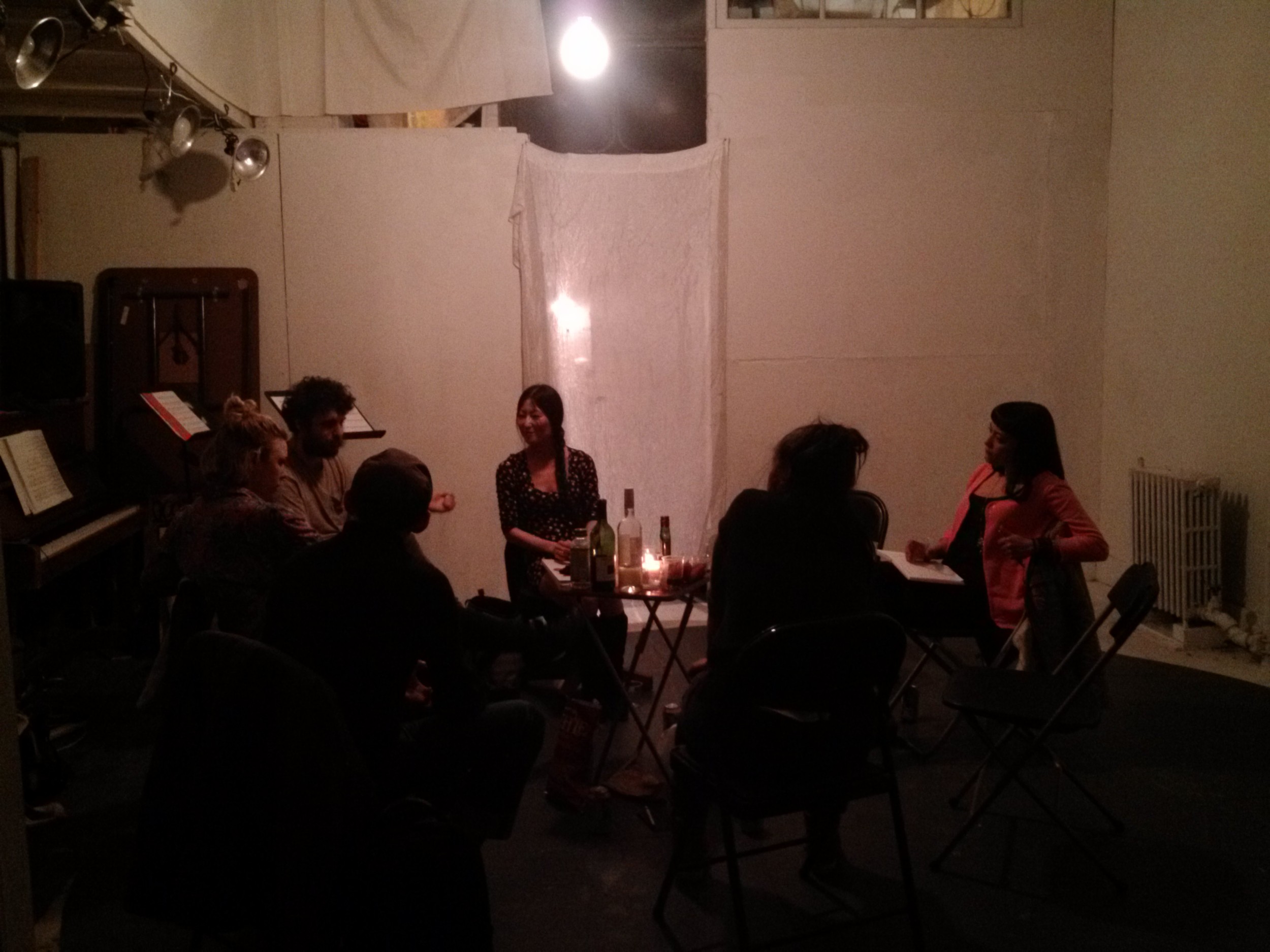Please allow 30 seconds for the audio to load
- Is a responsibility of the work to make an audience feel responsible?
- Do you want your audience to know your intention?
- What is your responsibility to your work?
- How is your responsibility to your own art-making realized? Is it to material, concepts, etc.?
- Do you have a certain rigorous disciplinary practice?
Ester Neff hosts the discussion at her home and event space, Panoply Performance Laboratory in Bushwick. She describes the space as a social/performance art space used for collective envisioning and theorization but also an art project in itself. In this conversation that attempts to cover a great deal of territory, the contributors paint a complicated picture of what responsibility means to art-makers today. The conversation tends to stay grounded in real world terms and involves many bilateral examples. The group starts out by discussing the relationship between artist and audience. While the artist may have a specific responsibility to the audience, the audience in effect becomes endowed with a responsibility, as well. Ester questions the group about what type of specific disciplinary practices they have in order to gauge the level of responsibility they feel to the labor aspect of their practice. She mentions that with responsibility comes an idea of structure that artist are often having to create for themselves. Artists are sending out emails, grant proposals, creating the type of work that they feel needs to exist in order to avoid existential dread, she says. Lital Dotan, who runs a similar venue to Panoply called Glasshouse, talks about his experience working with Hector Canonge on a project and the responsibilities that he felt during the collaboration. As the administrator of the event, he explains that he had some banal responsibilities that needed to be executed. Passing these onto an artist became difficult because the responsibilities of the event space are often times different than those of the artist. Lital describes having told Hector the limitations of the space and what he could do but when it came to the event, Hector lifted some of those limitations in order to carry out his work responsibly. From the relationships of artists and their audiences, to artists with gallerists/event organizers, to employees and employers, we see that responsibility becomes a convoluted topic when it comes to several agendas existing at once.






